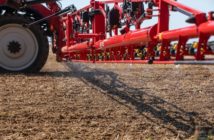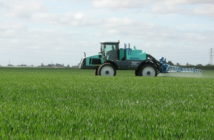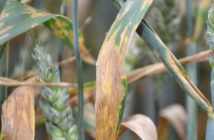Potato growers fearful that slug control may be compromised following the loss of methiocarb baits should switch to metaldehyde pellets of a similar quality, says an industry expert.
“Methiocarb baits were well respected among potato growers partly because of the processes involved in their manufacture. These ensured they were highly palatable, but also robust. Fortunately, there are several metaldehyde-based pellets of similar, if not, higher quality available to growers,” says Dr Andy Evans at Scotland’s Rural College.
As leader of the Applied Practice Team and pest management specialist he is regularly called on to pass advice on matters relating to crop protection, with slug control a topic that is once again at the forefront of growers’ minds.
“One reason why methiocarb proved so popular among potato growers was its all-round performance. It had the size and mass to spread well, was robust enough to endure moist conditions and was appetising to slugs, but there are credible alternatives. It was widely believed that methiocarb was more effective under cooler, wetter conditions, but in practice the results were inconsistent,” he says.
When looking for an alternative pellet, Andy Evans’ advice is clear: “Growers need to stipulate a wet-process pellet, such as TDS, that uses durum wheat flour to create a highly palatable bait. Pellet size is important as smaller pellets will not demonstrate a consistent ballistic property, additionally a smaller pellet will present a higher volume: surface ratio potentially leading to increased degradation,” he adds.
Advice on application practice remains unchanged and, is in most cases, is the over-riding factor determining success.
“If you suspect you are likely to face a slug burden then suitable seed bed preparation is an obvious first step, but pellet application at two critical periods is often advisable.
“Unless numbers are high and populations active, the first application should be made between 50-75% canopy complete. Trials have shown that one application at this timing is better than repeated low dose applications. A follow-up application can be made four to six weeks later at the early stages of tuber bulking, if necessary,” he says.
Growers are not limited by the number of applications they can make, but are restricted by the amount of the metaldehyde active substance that can be applied in a 12-month period. While some experts prefer the ‘little and often’ approach, Andy Evans prefers to make planned applications based on when the crop is under most pressure.
“Baiting points are not a concern as evidence suggests 30 pellets per square metre are sufficient to give effective control, rather the issue is one of appropriate use of plant protection products,” he says.



